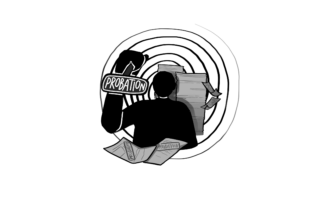On October 30, Aragon students filed into the Student Lunch Room to cast their mock election ballots. Students could vote for state propositions, the state senator, and the president. A total of 1,191 students voted — 82.25 percent of the Aragon student population.
The true question in regard to the election is whether or not this vote had any significance. After all, these ballots did not affect the actual election, but merely gave an insight into student opinion in regard to political issues. It can be argued that the mock election did not serve this purpose, as some students are not fully informed on current political topics and, thus, cast uninformed ballots. Such is the reality of real elections as well.
However, the beneficial effect of this mock-election was that it encouraged students to participate in our democratic process. Encouraging students to participate now will make them aware of the voting process and, thus, more likely to vote in the future. So, while this mock election does not guarantee that every student who voted will be a regular voter when he or she is older, it does provide the exposure that could lead to a regular habit of voting.
The average voter turnout for presidential elections in the United States was 56.8 percent in 2008, and that number was nearly halved during the midterm elections. The United States has one of the lowest voter participation rates of any nation in the industrialized world, despite the fact that we like to trumpet the benefits of democracy. In general, younger voters tend to show more apathy when it comes to elections because they feel less affected by politics.
Thus, the purpose behind having this mock election in the first place was to emphasize the importance of voting—and, it did just that.



